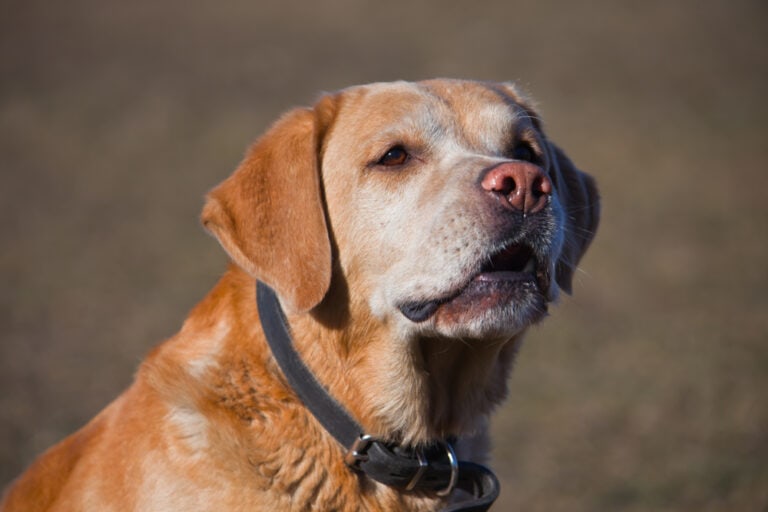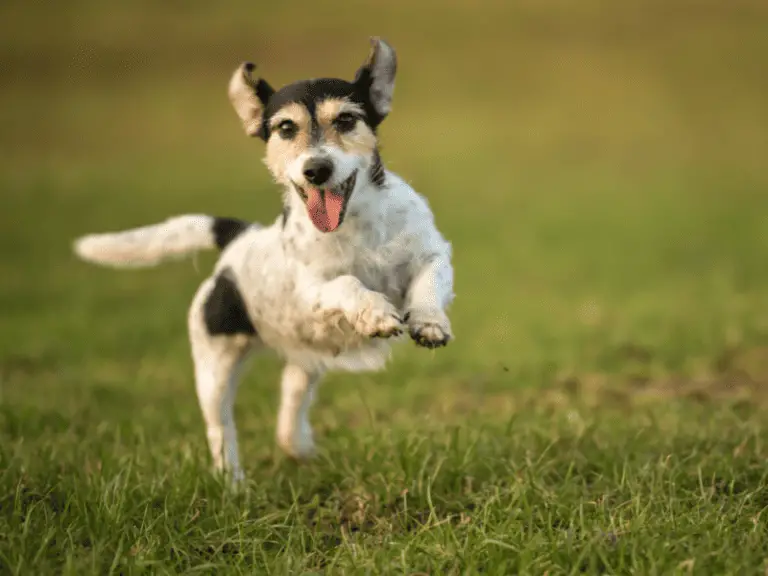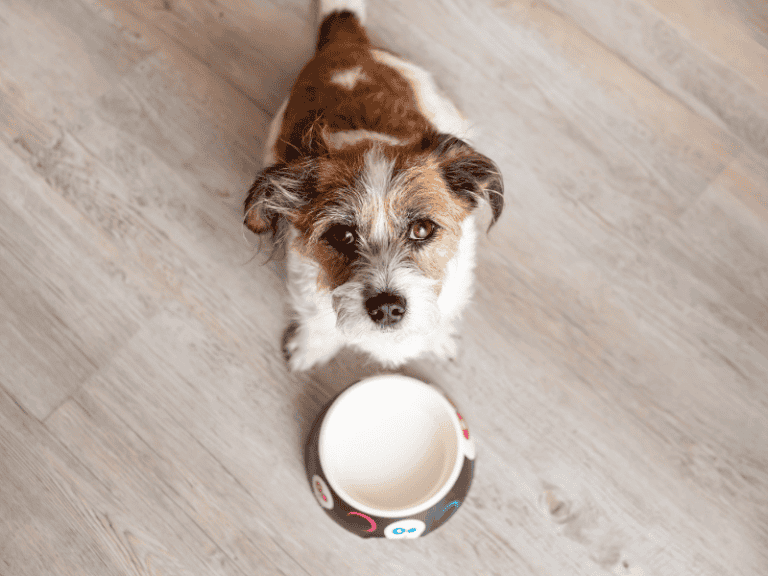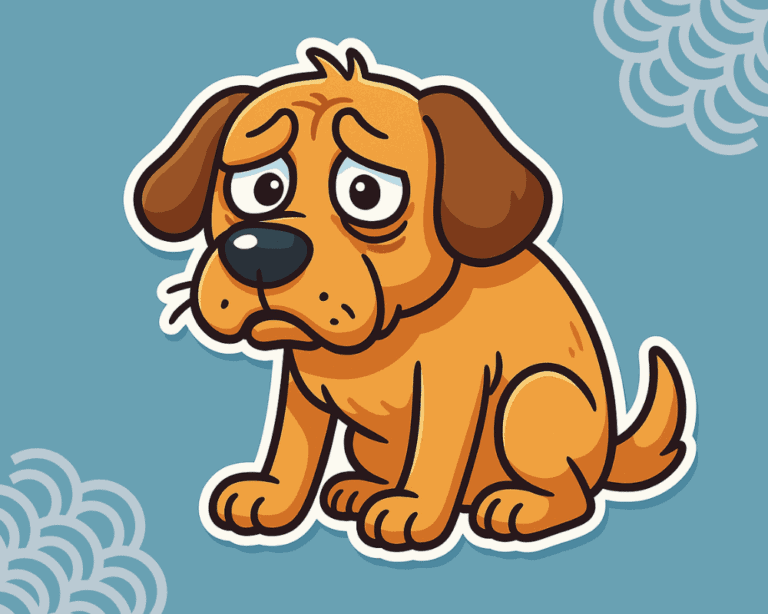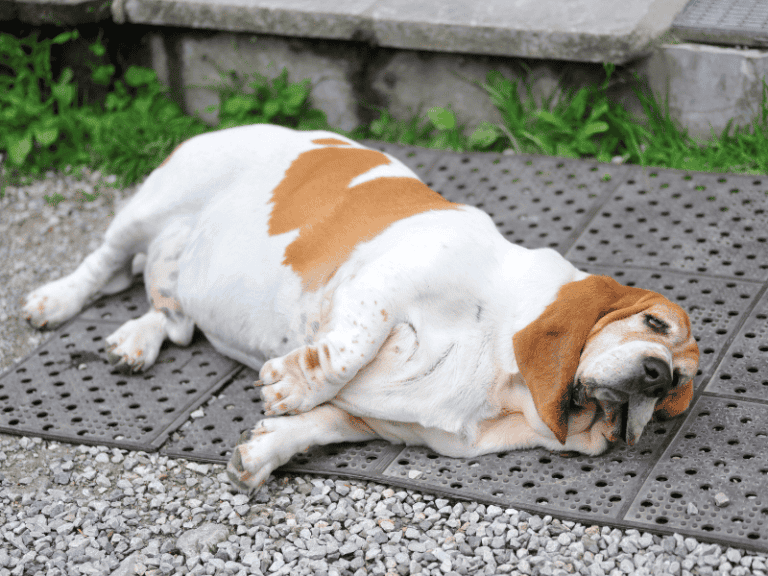10 Signs Your Senior Dog Should Switch Food
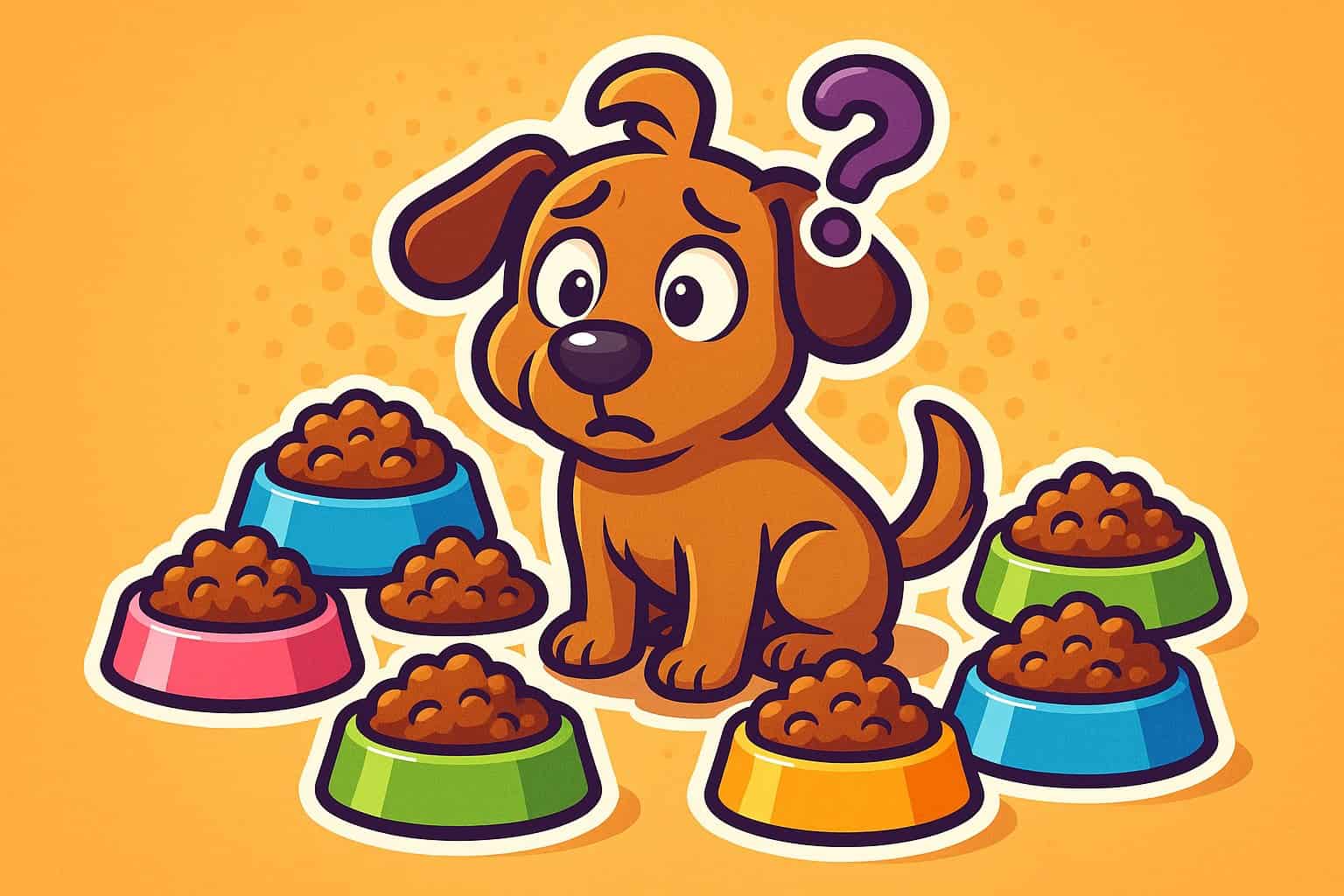
Maybe you’ve noticed your furry companion moving a little slower these days. Or perhaps they’ve started turning their nose up at their usual kibble.
As dogs age, their bodies change—just like ours do. What worked perfectly for their younger years might not be the best choice anymore.
Most dogs hit the senior stage somewhere between 7 and 10 years old, depending on their size. But honestly, age is just a number; what’s more important is paying attention when your dog’s body starts sending signals.
From changes in their coat and energy to digestive troubles and joint stiffness, your dog has ways of showing you when it’s time to consider a switch to senior-specific food that better supports their aging needs.
1) Noticeable Decrease in Your Dog’s Energy and Playfulness
Have you noticed your once-energetic companion now prefers the couch over a game of fetch? This shift in energy might be more than just normal aging.
When your senior dog suddenly loses interest in their favorite activities, their current food might not be meeting their changing nutritional needs. Older dogs need different nutrients to maintain their energy levels.
Maybe you’ve seen your dog struggle to get up from their bed or skip their usual morning excitement. These changes often signal that their diet needs adjustment.
Senior dogs need easily digestible proteins and specific vitamins to support their aging bodies. If their food lacks these nutrients, you’ll see it in their daily behavior first.
Should you notice your dog sleeping more than usual or showing less enthusiasm during walks, consider their diet. The right senior formula can help restore some of that lost spark.
Your dog’s decreased playfulness isn’t something you have to accept as inevitable. Sometimes a simple food switch can make a remarkable difference in how they feel and act each day.
2) Sudden or Gradual Weight Loss Despite a Normal Appetite
Have you noticed your senior dog eating well but still losing weight? This can be confusing and worrying for any dog owner.
When your older dog maintains a good appetite but drops pounds, their current food probably isn’t meeting their changing needs. Senior dogs process nutrients differently than younger pups.
Maybe you’ve seen your dog finish every meal with enthusiasm, yet their ribs become more visible over time. This gradual weight loss might seem harmless, but it shouldn’t be ignored.
If your dog loses 10% of their normal body weight, it’s time to take action. Their digestive system might not be absorbing nutrients properly from their current food.
Dental issues can also play a role. Your dog might appear to eat normally but struggle to chew kibble effectively, leading to poor nutrient absorption.
Should you notice this pattern, consider switching to a senior-specific formula designed for better digestibility. These foods often contain easily absorbed proteins and added nutrients that aging dogs need more of.
3) Visible Stiffness or Difficulty Moving, Especially After Rest
Maybe you’ve noticed your senior dog struggling to get up after a long nap on their favorite spot. This morning stiffness is one of the clearest signs that joint discomfort might be affecting their quality of life.
Does your dog seem to move like they’re walking on eggshells after lying down for a while? Joint stiffness often shows up most clearly when dogs first stand up after resting.
You might see them take a few tentative steps before their normal gait returns. Some dogs even limp slightly or drag their feet when they first get moving.
If your dog used to bound up the stairs but now approaches them with hesitation, their joints might be sending them pain signals. The same goes for jumping onto furniture they once leaped onto effortlessly.
This stiffness happens because aging joints don’t produce as much lubricating fluid as they used to. Think of it like a rusty door hinge that needs oil to move smoothly.
The right senior dog food can provide joint-supporting nutrients like glucosamine and omega-3 fatty acids. These ingredients may help reduce inflammation and support better mobility as your dog ages.
4) Changes in Coat Texture or Increased Shedding
Have you noticed your senior dog’s coat doesn’t feel as soft as it used to? Maybe you’re finding more fur around the house than usual?
Changes in your older dog’s coat can signal it’s time for a food switch. As dogs age, their skin and hair naturally change, but dramatic shifts often point to nutritional gaps.
Your dog’s coat might become dull, brittle, or thin. You may see bald patches or notice excessive shedding that goes beyond normal seasonal changes.
Poor nutrition affects coat health quickly. Senior dogs need different nutrients than younger pups to maintain healthy skin and fur.
If your dog’s coat feels rough or looks lackluster, check their current food’s protein and fat content. Older dogs often need higher quality proteins and omega fatty acids.
Hormonal changes in senior dogs can also affect their coat. However, switching to a senior-specific formula with the right nutrients can help support better coat health.
Should you notice patchy hair loss or severe texture changes, visit your vet first. But if it’s general dullness or increased shedding, a senior dog food might be exactly what your furry friend needs.
5) Dental Problems Such as Bad Breath or Difficulty Chewing
Have you noticed your senior dog’s breath could knock you over from across the room? While doggy breath was never exactly minty fresh, significantly worse breath in older dogs often signals dental problems.
Your dog’s teeth naturally accumulate tartar and plaque over the years. This buildup leads to gum disease, tooth decay, and painful infections that make eating uncomfortable.
Watch for signs like your dog dropping food while eating or chewing only on one side of their mouth. Maybe they’re suddenly avoiding their favorite hard treats or taking much longer to finish meals.
If your dog’s teeth are causing pain, they need softer food that’s easier to chew. Wet food or kibble soaked in warm water can make mealtime more comfortable while you address the underlying dental issues.
Don’t ignore dental problems in your senior dog. Left untreated, mouth infections can spread to vital organs like the heart and kidneys, creating serious health risks.
Schedule a vet visit if you notice excessive drooling, bleeding gums, or loose teeth. Your vet can recommend the best treatment plan and suggest appropriate food textures for your dog’s current dental condition.
6) More Frequent Digestive Issues Like Diarrhea or Constipation
Have you noticed your senior dog having more bathroom troubles lately? You’re not alone in this concern.
As dogs age, their digestive systems become more sensitive. What once worked perfectly for your furry friend might now cause upset stomachs or irregular bowel movements.
Your dog’s current food might be too rich or hard to digest. Senior dogs often need gentler ingredients that are easier on their aging stomachs.
If you’re seeing loose stools that last more than a day or two, it’s time to consider a food change. The same goes for constipation that happens regularly.
Maybe you’ve noticed your dog straining more often or having accidents in the house? These could be signs their food isn’t working for them anymore.
Senior-specific dog foods are formulated with easier-to-digest proteins and added fiber. This helps keep everything moving smoothly through their system.
Should you notice blood in the stool or persistent vomiting along with these issues, contact your vet right away. But if it’s just more frequent digestive upset, switching to a senior formula might solve the problem.
7) Your Dog Seems Less Interested in Food or Has Changed Eating Habits
Have you noticed your senior dog pushing food around their bowl or walking away after just a few bites? Changes in eating habits are one of the most common signs that your older dog might need different food.
As dogs age, their appetite naturally decreases. Your once food-obsessed pup might now seem picky or disinterested in meals they used to love.
Maybe your dog takes longer to finish eating or leaves food behind. Perhaps they’ve started eating at different times or need coaxing to approach their bowl.
These changes happen because senior dogs have different nutritional needs than younger ones. Their metabolism slows down, and they may need fewer calories overall.
If your dog is eating less but maintaining their weight and energy, smaller portions of age-appropriate food might help. Senior dog foods are often easier to digest and more appealing to older taste buds.
However, sudden appetite loss or complete food refusal needs immediate attention. If your dog stops eating for more than a day or shows other symptoms like lethargy, contact your vet right away.
8) Increased Joint Pain or Swelling Observed During Walks
Have you noticed your senior dog limping more after your daily walks? Maybe they’re moving slower or seem stiff when getting up from rest.
Joint pain often becomes more obvious during exercise. Your dog might start favoring one leg or avoid putting full weight on a paw.
Watch for subtle signs during walks. Does your dog stop more frequently to rest? Are they reluctant to go up stairs or jump into the car afterward?
Swelling around joints is another red flag. You might see puffiness around the knees, hips, or ankles after physical activity.
Sometimes the pain shows up hours later. Your dog might seem fine during the walk but appear stiff or sore that evening.
If walking used to be your dog’s favorite activity but now they seem hesitant, their joints could be telling you something important. Diet changes that reduce inflammation might help ease their discomfort.
Pay attention to how long it takes your dog to „warm up“ during walks. Healthy joints shouldn’t need several minutes to loosen up.
9) Confusion or Signs of Slowed Mental Sharpness
Have you noticed your senior dog staring blankly at walls or getting lost in your own backyard? These changes might signal more than normal aging.
Mental decline in older dogs is similar to dementia in humans. Your dog’s brain changes as they age, which can affect their thinking and memory.
You might see your dog forgetting familiar routines or commands they knew for years. They may stand in corners looking confused or forget why they walked into a room.
Some dogs start having accidents indoors even when they’re house-trained. Others might not recognize family members right away or seem anxious in familiar places.
Sleep patterns often change too. Your dog might pace at night or sleep more during the day than usual.
The right senior dog food can help support brain health. Look for foods with omega-3 fatty acids and antioxidants that support cognitive function.
If your dog shows these signs, talk to your vet. They can tell the difference between normal aging and serious cognitive decline.
10) Unexplained Changes in Sleeping Patterns or Restlessness
Has your senior dog suddenly become a night owl? Maybe you’ve noticed them pacing the halls at 2 AM when they used to sleep soundly.
Changes in sleep patterns can sometimes point to nutritional needs that aren’t being met. Your dog’s aging brain requires specific nutrients to function properly.
If your dog seems restless or confused at night, their current food might not provide enough support for cognitive health. Senior dogs need foods rich in antioxidants and omega fatty acids.
Think of it like this: just as we might feel foggy when we haven’t eaten well, your dog’s brain can struggle too. Poor nutrition can make existing age-related changes worse.
You might notice your dog wandering aimlessly or seeming disoriented during their usual sleep hours. They may pace back and forth or have trouble settling down.
A diet designed for senior dogs often includes ingredients that support brain health. These nutrients can help improve sleep quality and reduce nighttime anxiety.
Should you notice persistent sleep changes, talk to your vet first. They can rule out medical issues and help you choose the right senior formula for your dog’s needs.
Why Senior Dogs Need Different Nutritional Care
Your senior dog’s body works differently than it did in their younger years. They need specific nutrients and fewer calories to stay healthy.
Aging brings changes to digestion, metabolism, and organ function that standard adult dog food just can’t address.
How Aging Changes Your Dog’s Dietary Needs
Your dog’s metabolism slows down as they age, just like yours might. This means they need fewer calories to maintain a healthy weight, but they still need the same amount of essential nutrients.
Their digestive system becomes less efficient too. You might notice your senior dog has trouble breaking down certain foods or experiences more stomach upset than before.
Key metabolic changes include:
- Slower calorie burning (20-30% reduction)
- Reduced protein absorption
- Decreased water intake
- Lower muscle mass maintenance
Your dog’s kidneys and liver don’t filter toxins as well as they used to. This makes high-quality, easily digestible proteins more important than ever.
Senior dogs also produce less stomach acid. This can make it harder for them to absorb nutrients from their regular food, even if they’re eating the same amount.
Common Health Challenges in Older Dogs
Joint problems affect most senior dogs, whether it’s mild stiffness or full arthritis. Your dog needs specific nutrients to support their joints and reduce inflammation.
Most common senior dog health issues:
- Arthritis and joint pain
- Kidney disease
- Heart problems
- Cognitive decline
- Weight gain or loss
Heart disease becomes more likely as your dog ages. They need controlled sodium levels and specific nutrients to support heart function.
Kidney problems sneak up on many senior dogs. You’ll want food with moderate, high-quality protein that won’t overwork their kidneys.
Your dog’s brain needs extra support too. Some senior dogs develop cognitive dysfunction, similar to dementia in humans. Certain nutrients can help slow this process.
Misconceptions About Senior Dog Food
Maybe you’ve heard that all senior dog foods are just marketing tricks. That’s not entirely true, though the quality varies a lot between brands.
Some people think senior food is always better for older dogs. The reality is more complicated—your healthy 8-year-old might not need it yet.
Common myths about senior dog food:
- All dogs need it at age 7
- It’s just regular food with fewer calories
- Supplements can replace proper nutrition
- One senior formula works for all dogs
You don’t have to switch just because your dog turns a certain age. Look for signs like weight changes, less energy, or digestive issues instead.
Senior dog food isn’t magic, but good formulas tackle real needs. Usually, they have fewer calories, more fiber, and extra nutrients for joints and brain health.
The biggest misconception? People think cheaper senior food is fine because „it’s all the same anyway.“ Your dog’s changing body actually needs better ingredients, not worse.
Making the Transition to Senior Dog Food
Switching your dog to senior food works best with a gradual approach over 7-10 days. Watch for signs that your dog is adjusting and reach out to your vet if you’re unsure.
Tips for Introducing New Food
Start slowly—seriously, this is the golden rule. Mix 75% of your dog’s current food with 25% senior food for the first couple of days.
Your dog’s stomach needs a little time to adjust to new ingredients. If you rush, you might end up dealing with diarrhea or vomiting.
Follow the 7-day schedule:
| Days | Current Food | New Senior Food |
|---|---|---|
| 1-2 | 75% | 25% |
| 3-4 | 50% | 50% |
| 5-6 | 25% | 75% |
| 7+ | 0% | 100% |
Maybe you’re wondering if you can speed things up. Don’t skip steps, even if your dog seems eager for the new food.
Pick the right time to start the transition. Try to avoid periods when your dog is stressed, sick, or you’re traveling.
A calm week at home really is the best setting. Keep meal times consistent during the switch.
Senior dogs thrive on routine, especially with diet changes.
How to Monitor Your Dog’s Adjustment
Watch your dog’s bathroom habits closely during the transition. Normal, firm stools are a good sign.
If you see loose stools or diarrhea, slow down the transition. Go back to the previous ratio for a few more days before moving forward.
Energy levels can tell you a lot about how your dog feels. If the transition goes well, your senior pup should keep their usual activity or even perk up a bit.
Pay attention to your dog’s appetite. Some dogs get excited about new flavors, while others need a bit of time to adjust.
Signs the transition is going well:
- Normal bowel movements
- Good appetite
- Usual energy levels
- No vomiting
- Happy at meal times
Red flags to watch for:
- Persistent diarrhea after a couple days
- Loss of appetite lasting more than 24 hours
- Vomiting
- Lethargy or odd behavior
Jot down a simple food diary during the transition. Note the ratio you’re feeding and how your dog is doing each day.
When to Consult Your Veterinarian
Call your vet if diarrhea sticks around for more than two or three days during the transition. That might mean your dog has a food sensitivity or something else going on.
If your dog vomits, completely loses their appetite, or just seems off for longer than you’d expect, get in touch with your vet right away.
Your vet knows your dog’s history and can suggest other senior food brands if your first choice isn’t working out. Sometimes it takes a couple tries to find the right fit.
Before you even start switching foods, check with your vet about the best timing. Dogs with ongoing health issues might need to coordinate the change with their treatments.
Some senior dogs need prescription diets for things like kidney, heart, or joint problems. Your vet will let you know if a therapeutic diet makes sense.
Don’t hesitate to call with questions during the switch. Most vets would rather catch problems early than deal with bigger issues later.
If your dog keeps refusing the new food after several tries, talk to your vet about other senior options. Forcing a food your dog won’t eat just isn’t worth it.

